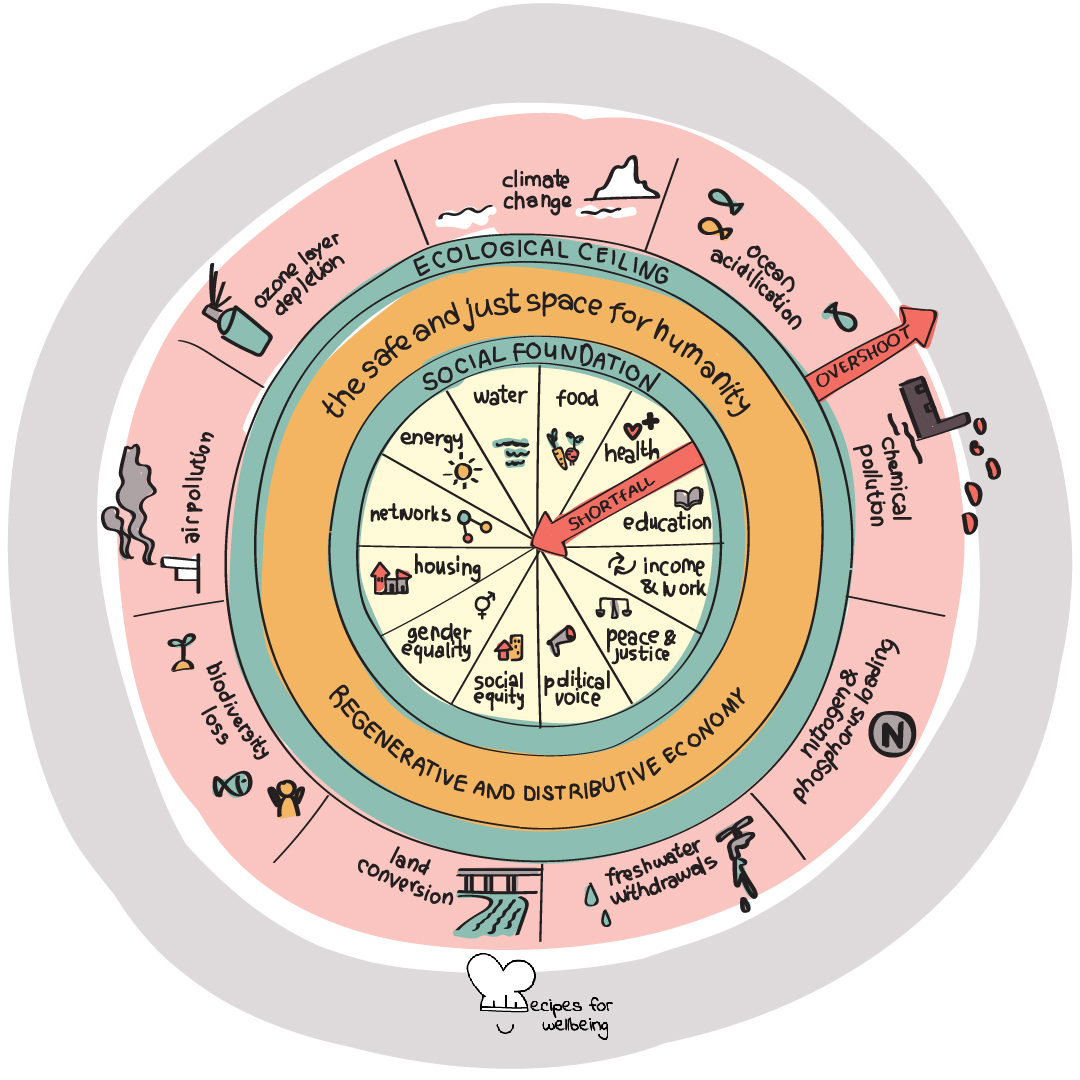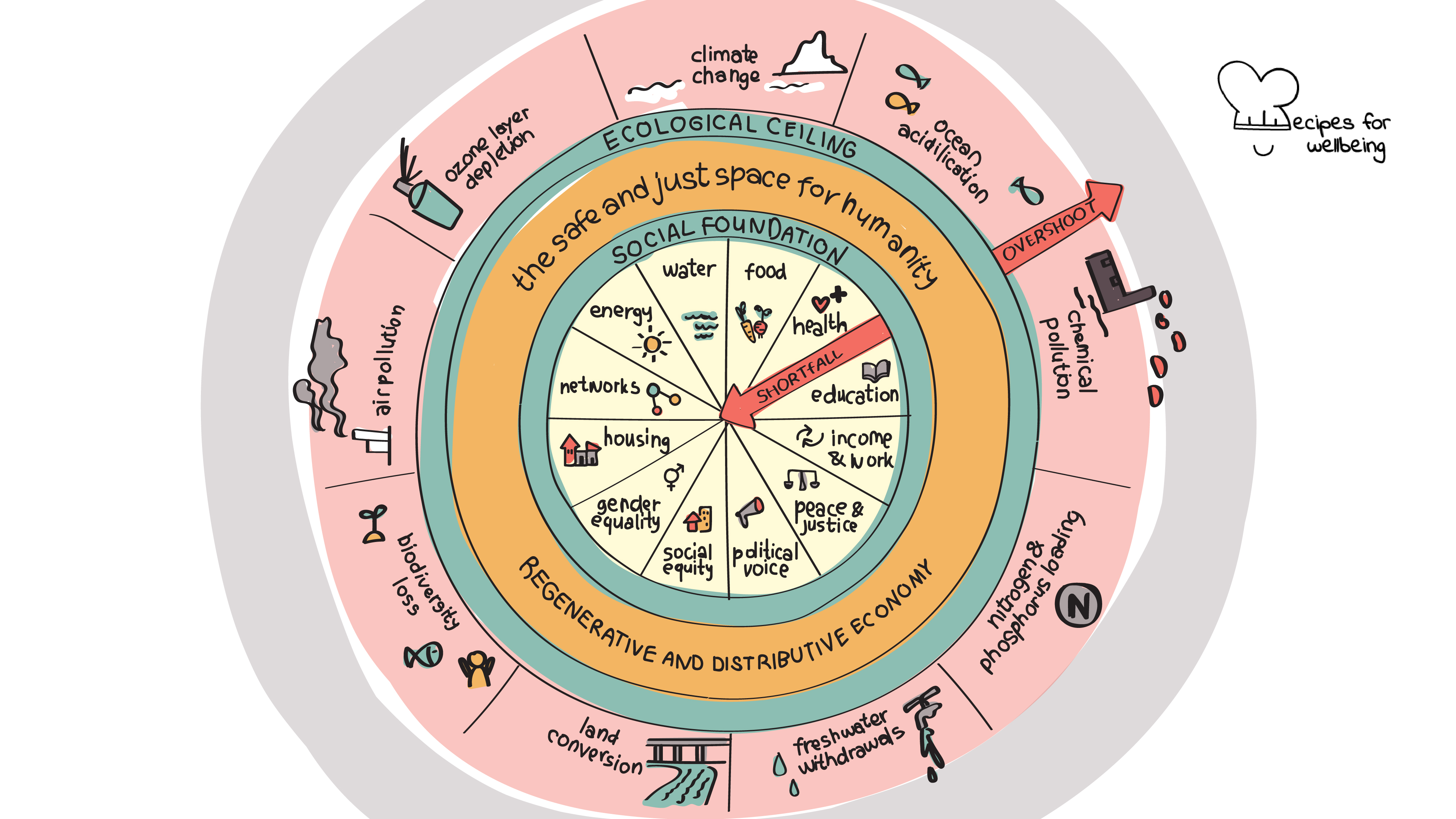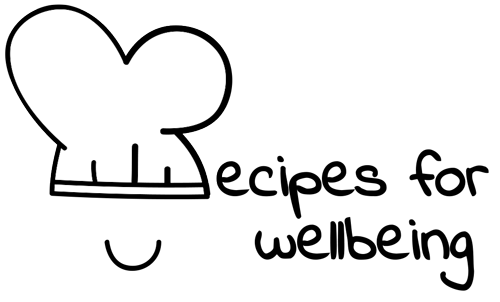
Doughnut Economy
We need joy as we need air. We need love as we need water. We need each other as we need the earth we share. ―Maya Angelou
👥 Serves: 26-40 people, 41+ people
🎚 Difficulty: Hard
⏳ Total time: Ongoing
🥣 Ingredients: A desire for a just economy that benefits all
🤓 Wholebeing Domains: Bioempathy, Community, Liberatory Learning
💪 Wholebeing Skills: Accountability, Challenging, Community-building, Ecosystem harmony, Fairness, Liberation, Nature kinship, Non-extracting, Reciprocity

Doughnut Economy
📝 Description
A visual framework for sustainable development respecting social and planetary boundaries.
With the ambitious goal of eradicating global poverty while respecting the Earth’s fragile and limited natural resources, the doughnut economic formula puts humanism back into economics. The Doughnut model aims to shift the current economic model from the traditional measurement of Gross Domestic Product (GDP) that many countries do, to instead focus on how economic prosperity should support human and natural wellbeing.
You might be wondering why it’s called “Doughnut”? No, it’s nothing to do with the sweet treat, but does it gets its name because it is visually represented by two doughnut-shaped circles: the one in the centre represents social foundation, or humans’ basic fundamental rights (water, housing, justice, social equity) and the outer ring is the ecological foundation (climate change, freshwater availability, air pollution) which cannot be exceeded if humans are to respect the earth and all prosper harmoniously.
In the middle of these circles, you can see the intersection at which humanity can progress if the planet’s boundaries are respected. All areas of the doughnut relate to the United Nations Sustainable Development Goals (SDG). Remember that SDGs were agreed upon by various governments involved in the United Nations!
The doughnut model is based on regenerative economics. This shifts the concept to consider aspects such as, what can we integrate into our organisation’s design to make sure that we can give value back to the community, greater society and even the environment? Instead of reducing the emission of greenhouse gases, this could be taken one step further by creating renewable energy. Or an organisation could reduce its car pollution but could go a step further by donating bicycles to the community.
The doughnut model completely changes the way we look at the economy by rethinking it and its impact on social, economic, and environmental aspects too. By following the model, it allows a positive balance for a thriving, rich community, and world.
This recipe has been adapted from the work of British economist Kate Raworth, the woman who coined the term “Doughnut Economics” in her 2012 Oxfam report, by our wellbeing content writer collaborator Marissa Del Mistro.
👣 Steps
Step 1 – Discuss the doughnut with the wider organisation (2 hours)
Regardless of the organisation size, imploring the principles of the doughnut is possible. This can start with a conversation, discussing the principles of the doughnut using the above imagery and uncovering what this means and how the current practices and strategies in place are in line with the goals of the doughnut economy. How does it align with sustainability and how do the outputs of the organisation truly support and impact the people in the local community?
Step 2 – Reframe organisations output from degenerative to regenerative
Currently, many organisations and businesses operate in “degenerative” practices that take from the earth’s resources, or its people make products or things, which are then used by people, and eventually, lost. All this shows how consumerism incentives are based on one-time or short-time use, causing a harsh impact on the world. By changing that impact to regenerative, it is gentler, kinder, and immensely more sustainable. This would flip the aforementioned model by taking, making, consuming/using, then restoring and regenerating. This works to find value at all stages including decomposition and ensuring that items are repaired, reused, refurbished, and recycled.
Step 3 – Reframe from centralising enterprise to distributive enterprise
Traditionally, organisational value has been placed on individualistic growth and the financial success of a small percentage of people. It has largely ignored the impact on lower level employers, and the wider, local community.
By reframing from centralised to distributive, the value is shared with all who co-create and use the item, product, idea, etc. This can be achieved through employee ownership, ensuring a living wage for everyone, ensuring ethical and sustainable practices, ownership and collaboration between everyone in the team, and a fair tax commitment which ensures that companies pay their fair share, and cannot avoid their payments by operating in a zone that offers lower tax breaks.
Step 4 – Reframe from extractive enterprise to generative enterprise
“How much finances can we get from this enterprise, organisation, business?” ask extractive enterprises.
“How many benefits, for the community, for the earth, for suppliers, owners, community members, supply chain workers, can this enterprise, organisation, business get?” ask regenerative enterprises.
Notice the difference? To make the change from extractive to regenerative, the organisation needs to first ask:
- What is the true PURPOSE of the organisation? Who are we serving? What do we wish to accomplish? What is our legacy?
- Who are our NETWORKS? Are we building strong connections between customers, suppliers, and the world? Do they know each other and offer transparency? Why is that important?
- What is the GOVERNANCE? What are the principles and practises in place? What are the culture and norms? Do we know our colleagues? Do we have a mission? What is our social and environmental impact?
- Who has OWNERSHIP? Are we a corporation? Are we a NGO? Is it owned by a family? Is it owned by the employees? Is it owned by shareholders?
- What is the quality of FINANCE? Is the focus on fast, financial returns? Make a ton of money and quickly? Are there investments? Is there social/environmental consideration? Are employees making a fair wage? What is a fair financial return? Do we have pensions in place?
These 5 aspects can help the organisation transform according to the principles of the doughnut. It is never too late! Think of The Danish Oil Dong Enterprises. After working with the doughnut economy, they moved away from fossil fuels into 100% renewable energy and even renamed themselves Orsted!
Think about the organisation – does it consider humanity and the earth when put into the doughnut or is it driving humanity out?

